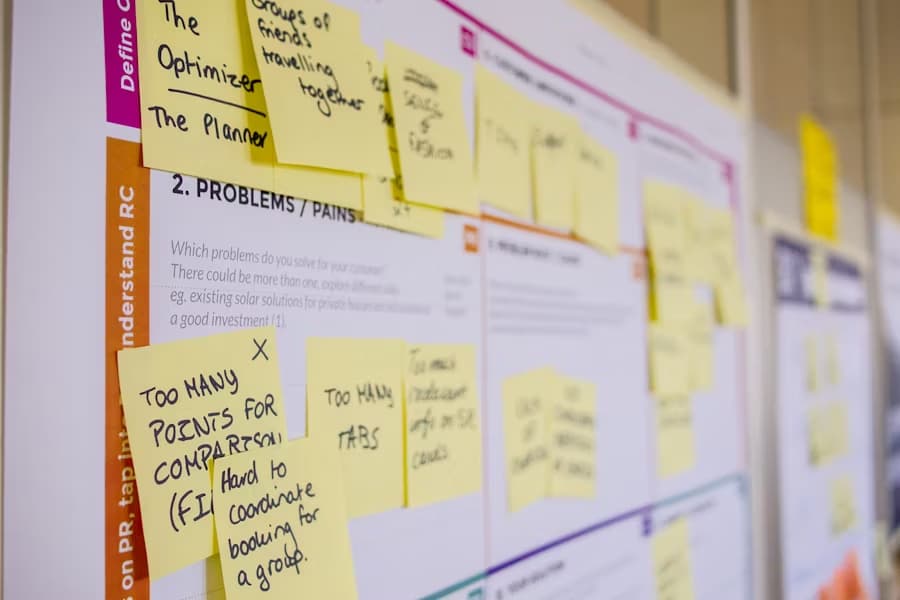Numerous students often grapple with the overwhelming demands of their schedules, finding it challenging to strike a harmonious balance between academic obligations and personal life. However, by incorporating pragmatic time management techniques into their daily regimen, they can optimize their available time and amplify their performance across various domains. From establishing attainable objectives to effectively prioritizing tasks, these empirically-supported methodologies equip students with the tools necessary to seize command of their time and realize both their scholastic and individual aspirations.
Embarking on the journey toward proficient time management necessitates an acknowledgment of the distinctiveness of each student’s circumstances. The recommendations outlined herein can be customized to align with individual requirements and inclinations. Through the adoption of one or more of these approaches, students stand to not only refine their time management proficiencies but also cultivate a more methodical, orderly, and concentrated approach to their academic and personal endeavors.
Establishing Objectives and Prioritizing Activities
Defining Priorities
The cornerstone of sound time management is the ability to distinguish top priorities. Recognizing these tasks provides a roadmap, guiding focus towards crucial activities. Begin this process by jotting down each obligation or task that demands attention, segregating them into various domains like academics, personal life, or extracurricular engagements. Subsequently, assign a rank to each task based on its urgency and significance. This system allows for optimal allocation of time and effort to high-priority tasks. Given that priorities can shift over different periods, it is essential to regularly reassess and adjust the list of tasks.
Setting Attainable Goals
After priorities have been outlined, it is necessary to formulate achievable goals. The role of goals extends beyond just acting as a source of motivation; they also serve as a yardstick for progress. The SMART framework can aid in setting effective goals:
- Specific: The goal should articulate a precise objective;
- Measurable: Ensure the possibility of tracking advancement and gauging outcomes;
- Achievable: The goal must strike a balance between being demanding and feasible;
- Relevant: The goal should align with your identified priorities and overarching aims;
- Time-bound: Attach a deadline to the goal to imbue a sense of urgency.
Adhering to these criteria enhances the likelihood of accomplishing goals while ensuring that responsibilities are managed in a balanced manner.
Tackling Mammoth Tasks Effectively
Undoubtedly, large-scale projects can appear daunting and sometimes insurmountable. A practical strategy to handle these efficiently is by dissecting them into bite-sized, manageable tasks. Construct a detailed execution plan with designated deadlines for each individual sub-task. Not only does this system allow adequate monitoring of progress, but it also ensures that no deadlines slip through the cracks. Embracing this approach can substantially decrease stress levels and procrastination tendencies, making it easier to handle potential hurdles and adapt when indispensable.
Breaking down a monumental task into manageable sections has three main benefits:
- Divide and Conquer: It becomes easier to comprehend the overall scope of the project. Each small accomplishment adds up, eventually leading to the completion of the primary task;
- Contingency Planning: With a clear vision of the project structure, it’s easier to foresee possible challenges and prepare in advance;
- Productivity Boost: Consistently meeting small deadlines can keep momentum high and morale boosted, leading to increased productivity.
Therefore, the art of setting goals and ranking priorities forms the cornerstone of successful time management for students. Through the mindful identification of priorities, the crafting of attainable goals, and the structuring of large tasks into manageable fragments, students can deftly manage their time, leading to increased productivity in both academic and personal spheres.
Designing a Comprehensive Schedule and Inculcating Routines
Building a Comprehensive Scheduler
The journey to efficient time management truly begins with the creation of a comprehensive schedule. A detailed calendar portraying all commitments such as lectures, extracurricular involvements, examination dates and assignment deadlines serves as a visual guide to balance responsibilities effectively. Both physical calendars and digital planners can serve this purpose, based on individual preference.
Tips on Building an Effective Scheduler:
- Colour Code: Use different colours for various categories (like academics, personal, extracurricular) for easy identification and better visualization of your schedule;
- Buffer Time: Incorporate extra time between tasks to account for transition or unforeseen delays;
- Revision Time: Allocate time after tasks or study sessions for revision or to address any pending issues.
Instituting Consistent Routines and Flexibility
Incorporating set routines into daily life can streamline activities, leading to more efficient time utilization. Having a fixed schedule for daily activities like waking up, studying, relaxing etc. eventually conditions the mind and body to follow this rhythm, leading to enhanced productivity. However, rigidity can sometimes be a roadblock; flexibility is equally crucial in effectively handling unexpected events or alterations in plans.
Helpful Routinized Habits:
- Regular, dedicated slots for studying;
- Designated time slots for household chores and personal errands;
- Scheduled breaks between study sessions to rejuvenate the mind;
- A consistent sleep schedule to ensure ample rest.
Thus, by creating a comprehensive schedule and incorporating consistent routines with some room for flexibility, students can significantly improve their time management, ultimately leading to academic and personal success.
Implementing Time Blocking and the Pomodoro Technique for Efficient Time Management
| Time | Activity |
|---|---|
| 9-12 | Classes |
| 12-1 | Lunch |
| 1-3 | Study time |
| 3-4 | Extracurriculars |
| 4-5 | Break/Exercise |
| 5-7 | Study time |
| 7-8 | Dinner |
| 8-10 | Relaxation/Social |
| 10-11 | Wind down |
| 11 | Sleep |
Mastering Workload and Assignment Management
Segmenting Assignments into Digestible Tasks
One efficient way of handling hefty assignments is by segmenting them into digestible parts. This way, rather than becoming overwhelmed by the enormous magnitude of the project, students can focus on smaller, more attainable objectives. This division allows for a deeper understanding of the project and significantly aids time management by facilitating easier scheduling and allocation of resources.
Here’s a step-by-step method for segmenting your tasks:
- Decomposition: Evaluate the assignment and identify its main components;
- Subdivision: Break down each component into smaller tasks;
- Time Estimation: Make a prediction of the time each task will take for completion;
- Prioritization: Arrange tasks in order of their importance and deadlines;
- Scheduling: Reserve specific time slots for each task, while accounting for breaks and other commitments.
This strategic approach allows students to methodically conquer their assignments, making them less daunting and more manageable. It also provides a sense of accomplishment as each small task is completed, thereby boosting motivation and productivity levels.
Embracing the Power of Saying No
In the student life, there are ample opportunities and activities to engage in. While participating in these opportunities is crucial for holistic development, it’s equally important to understand the limits of one’s capacity and time. Knowing when to say ‘No’ to certain activities can save valuable time and allow students to focus on their primary responsibilities.
Efficient Allocation of Resources with Deadline Tracking
Implementing Efficient Deadline Tracking
A vital aspect of proficiently managing academic workload is the apt tracking of assignment due dates. Having a clear understanding of upcoming deadlines is essential to allocate time and energy between different tasks judiciously. Using a physical calendar or a digital planner can aid in this process, and serve as a visual reminder of impending tasks and deadlines.
Efficient Deadline Tracking Practices:
- Initial Log-in: At the start of each academic term, note down all known due dates and important events. This includes exam schedules, assignment deadlines and even extracurricular events;
- Regular Calendar Check-ins: Frequently scrutinize the calendar to stay informed about upcoming responsibilities and deadlines;
- Update Regularly: Any changes or additions to the schedule should be promptly updated on the calendar. This ensures staying on top of the game;
- Reminder Setup: Establishing reminders for deadlines and important milestones can provide a preparatory nudge, as well as prevent any tasks from being overlooked.
Managing Resources with Priority Assignment
Once the deadlines have been efficiently tracked, the next step in task management is assigning priorities. Different tasks demand different levels of focus and effort. By assigning a level of priority to each task, students can ensure that their resources, time, and energy are utilized optimally.
Recommendations for Priority Assignment:
- Urgency: The tasks with the nearest due dates should often be treated as higher priority;
- Importance: Tasks with a substantial impact on overall grades or personal development should get priority;
- Complexity: More complex tasks might require more time and energy. Thus, they should be higher on the priority list.
In a nutshell, successful time management among students not only requires setting achievable goals but also involves strategic planning through comprehensive scheduling, effective workload management, and diligent deadline tracking. Featuring all these components, this guide offers a definitive pathway to academic triumph and personal growth.
Embracing Collective Learning Through Study Groups
Participating in study groups can be a powerful strategy to manage academic tasks and augment learning. These groups can provide a platform for constructive dialogue, peer learning, shared accountability, and efficient problem-solving. They can serve as conduits to a deeper understanding of complex content, while also fostering a sense of camaraderie among peers.
Before embarking on the collective learning journey, consider the following recommendations for successful study group engagement:
- Group Selection: Opt for a group that comprises individuals with similar academic objectives and compatible study patterns. A harmonious blend of personalities can lead to fruitful interactions and collective productivity;
- Scheduled Meetings: Establish regular meeting schedules suitable for all group members. A predetermined venue conducive to studying can ensure minimal disruptions;
- Role Rotation: Encourage the practice of rotating leadership roles, note-taking responsibilities, and the task of managing study materials. This can ensure equal involvement from all members and keep the group sessions engaging;
- Task Collaboration: Break down complex assignments into smaller sub-tasks, and distribute them among group members. Work on these collectively, providing constructive feedback to each other. This collaborative effort can lead to efficient task completion and knowledge enhancement;
- Sustained Engagement: Maintain focus during group sessions and actively contribute to the discussions. Remember the primary goal—studying—and ensure the group stays on track.
Adopting these practices when joining a study group can significantly bolster time management capabilities, enhance understanding of complex concepts, and foster a sense of accountability and camaraderie among students.
Enhancing Concentration and Productivity: Effective Tactics
Eradicating Distractions and Avoiding Multitasking
Enhancing focus and productivity in a world overflowing with distractions can be a challenging task. Addressing this begins by identifying potential distractions and systematically eliminating them. This may involve turning off mobile notifications, closing nonessential websites or social media tabs, and creating a serene, clutter-free study area conducive to concentration.
While multitasking may seem like an effective strategy to handle an array of tasks simultaneously, studies suggest it can fracture attention and lead to increased mistakes. Focusing on a single task at any given time can result in a higher quality of work and improved productivity.
Assigning Daily Priorities and Creating Task Lists
Another helpful strategy is to construct daily task lists. This can not only provide a clear outline of the day’s responsibilities but also aid in prioritizing tasks based on their urgency and significance. This delineation can guide students in allocating their time and effort to tasks that yield maximum impact.
Breaking down extensive tasks into smaller steps can make them more manageable and less overwhelming. A standard format for a daily task list could be:
- Priority A: Tasks of high importance that need immediate attention;
- Priority B: Tasks of moderate importance that can be approached once Priority A tasks are completed;
- Priority C: Tasks of low importance that can be tackled once the rest of the list is accomplished.
These strategies of eliminating distractions, avoiding multitasking, and creating prioritized task lists can markedly enhance students’ focus and productivity, thereby improving their academic achievement and overall wellbeing.
A Balanced Approach: Integrating Breaks and Physical Activity into Schedules
Concentration, like any other physical or mental faculty, can dwindle over prolonged periods of intense usage. Therefore, integrating short, regular breaks into study sessions can be beneficial to rejuvenate the mind and maintain a consistent level of focus. For instance, following the Pomodoro Technique could set a pathway to optimal productivity: 25 minutes of focused work followed by a five-minute break cycle.
Moreover, regular physical activity can prove to be a game-changer. It can enhance circulation, boost energy levels, and improve cognitive functioning. Here are some recommendations for incorporating exercise into a busy schedule:
- Micro Workouts: Short bursts of high-intensity exercises fitted into regular study breaks can boost fitness over time;
- Walk and Talk: If the day’s schedule is packed, consider combining activities. For instance, reviewing study materials while taking a brisk walk around the block;
- Deskercises: Simple stretches or physical activities performed sitting or standing by your desk can help keep the body active, even during long study sessions.
Time Use Tracking: Logs and Applications
Maintaining a time-use log can be instrumental in gaining insights into how one’s time is spent. It can expose potential distractions, time-wasting habits, and unproductive patterns, assisting in formulating more effective time management strategies.

Numerous digital tools, like RescueTime or Forest, can facilitate this process by tracking screen time, website usage, and overall productivity levels. Periodically analyzing the collected data can shed light on patterns and trends in time usage, paving the way for improvements.
In conclusion, successful time management is a dynamic process that relies on a balance between structured planning and flexible adaptation. By adopting these strategies, students can enhance concentration, productivity, and ultimately their academic performance.
Enhancing Well-being through Sleep and Self-Care Practices
Prioritizing your well-being involves more than just indulging in hobbies and physical activities. It also entails nurturing your body and mind through adequate sleep and self-care practices. Here’s a comprehensive guide on how to seamlessly incorporate these vital elements into your daily routine, ensuring a holistic approach to your health:
Establishing a Consistent Sleep Schedule:
- Aim for 7 to 9 hours of sleep each night: Quality sleep is paramount for overall health and cognitive function. Strive to maintain a consistent bedtime and wake-up time, even on weekends, to regulate your body’s internal clock;
- Understand your sleep needs: While the recommended sleep duration for adults is 7 to 9 hours, individual needs may vary. Pay attention to how you feel after different amounts of sleep to determine your optimal duration;
- Create a conducive sleep environment: Make your bedroom a sanctuary for rest by keeping it cool, dark, and quiet. Invest in a comfortable mattress and pillows to support proper spinal alignment and minimize disruptions during the night.
Developing a Relaxing Bedtime Routine:
- Engage in calming activities: Wind down before bed by practicing relaxation techniques such as deep breathing, progressive muscle relaxation, or visualization exercises. These activities signal to your body that it’s time to unwind and prepare for sleep;
- Limit screen time before bed: Exposure to blue light from electronic devices can interfere with your body’s production of melatonin, the hormone responsible for regulating sleep-wake cycles. Establish a digital curfew at least an hour before bedtime to promote better sleep quality;
- Experiment with bedtime rituals: Find rituals that help you transition from the busyness of the day to a state of relaxation. Whether it’s sipping herbal tea, journaling, or practicing gratitude, incorporating meaningful rituals can signal to your brain that it’s time to shift gears and prioritize self-care.
Nurturing Physical Health:
- Prioritize regular exercise: Aim for at least 150 minutes of moderate-intensity exercise per week, incorporating activities you enjoy such as walking, yoga, or dancing. Exercise not only improves physical health but also enhances mood and reduces stress;
- Fuel your body with nutritious foods: Embrace a balanced diet rich in fruits, vegetables, whole grains, lean proteins, and healthy fats. Opt for nutrient-dense foods that provide sustained energy and support cognitive function;
- Stay hydrated: Dehydration can negatively impact mood, cognitive performance, and overall well-being. Aim to drink plenty of water throughout the day, and carry a reusable water bottle to stay hydrated on the go.
Conclusion
In summary, when students adopt time management strategies that are specifically designed for their individual requirements, they are better equipped to handle the intricacies of their daily routines. By consistently applying these methods, they improve their grades and pave the way for a lifestyle that is both balanced and rewarding. By prioritizing their responsibilities, establishing attainable goals, and keeping their concentration sharp, students enable themselves to reach their targets with increased effectiveness and self-assurance. This proactive approach not only leads to academic achievement but also lays the foundation for success in their personal lives.



